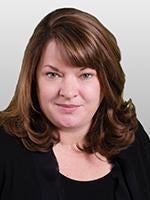On June 17, 2015, the Health Resources and Services Administration (HRSA) published a proposed rule to clarify how manufacturers should calculate the ceiling price for covered outpatient drugs under the 340B program, and to provide for civil monetary penalties (CMPs) on manufacturers that “knowingly and intentionally” overcharge 340B covered entities.[1] The ceiling price provisions are not expected to significantly change manufacturers’ current practices; however, the possibility of CMPs is a new aspect of the 340B program. Although HRSA speculates that the use of CMPs will “probably be rare,” the proposed rule does not provide significant guidance regarding what constitutes a knowing and intentional violation. The rule would also subject manufacturers to liability for failure to ensure that covered entities receive 340B pricing from wholesalers or other distributors, raising questions about manufacturers’ obligations to oversee these entities.
Background
Section 340B of the Public Health Service Act (PHSA) requires drug manufacturers to provide certain “covered entities” with discounted pricing on select drugs as a condition of receiving reimbursement under Medicaid.[2] Participating manufacturers agree that the amount to be paid by a covered entity for a covered outpatient drug will not exceed a statutorily defined “ceiling price.”
The Patient Protection and Affordable Care Act (ACA) made a number of changes to the 340B program, including expanding the types of eligible covered entities, enacting compliance provisions applicable to manufacturers and covered entities, and providing for the establishment of an administrative process to resolve certain disputes between covered entities and manufacturers.[3] The proposed rule would implement two of the manufacturer compliance provisions.[4]
Proposed Rule Defines 340B Ceiling Price Calculation
By statute, the 340B ceiling price for a covered drug is equivalent to the drug’s average manufacturer price (AMP) in the preceding calendar quarter reduced by a rebate percentage. The proposed rule provides additional guidance to manufacturers regarding how to calculate this ceiling price, and would require manufacturers to calculate the price on a quarterly basis using the AMP for the smallest unit of measure minus the Unit Rebate Amount (URA) to six decimal places. HRSA would then multiply that amount by the drug’s package size and case package size. HRSA will publish the ceiling price, presumably on a quarterly basis, rounded to two decimal places.
The rebate percentage is limited to 100 percent of the AMP, such that the 340B price will never be negative. However, where the ceiling price is between zero and $.01, the proposed rule sets the ceiling price at $.01 (so-called “Penny Pricing”).
HRSA also proposes to codify previously issued guidelines for calculating the ceiling price of new drugs for which AMP data is not yet available.[5] Manufacturers must estimate the ceiling price of the new drug for the first three quarters in which the drug is available for sale, though the rule does not provide guidance regarding how to compute the estimated price. Beginning with the fourth quarter, the manufacturer utilizes the AMP calculation applicable to other covered drugs and calculates the “actual” ceiling price for the first three quarters. By the end of the fourth quarter, manufacturers must refund or credit any difference between the actual and estimated ceiling prices to covered entities that purchased the drug during the first three quarters.
New Civil Monetary Penalties for Manufacturers
ACA section 7102 required the Secretary of Health and Human Services to provide for the imposition of CMPs on manufacturers that “knowingly and intentionally” charge a covered entity more than the ceiling price. Manufacturers with a 340B agreement may be subject to CMPs of up to $5,000 per “instance of overcharging,” and must refund covered entities for such overcharges.
The proposed rule defines “instance of overcharging” as “any order for a covered outpatient drug, by NDC, which results in a covered entity paying more than the ceiling price.”[6] “Each order for an NDC will constitute a single instance, regardless of the number of units of each NDC ordered. This includes any order placed directly with a manufacturer or through a wholesaler, authorized distributor, or agents.”[7] An “instance of overcharging” can occur not only at the time of the initial purchase, but also when subsequent ceiling price recalculations occur and the manufacturer fails to refund or credit the covered entity for any difference. HRSA will not consider a manufacturer’s failure to meet the 340B ceiling price to be an instance of overcharging if the covered entity did not identify the purchase as 340B eligible at the time of purchase.
The regulation applies only to manufacturers even though wholesalers and other entities have a role in the discount process. “A manufacturer’s failure to ensure that covered entities receive the appropriate 340B discount through its distribution arrangements may be grounds for the assessment of civil monetary penalties under this regulation.”[8]
Although CMPs may be imposed only for knowing and intentional overcharges, HRSA has not provided clear guidance regarding how that standard will be applied. In a September 2010 ANPRM, HRSA “contemplate[d]” that “knowing and intentional” could be “inferred from the circumstances.”[9] HRSA suggested that a manufacturer could be liable if it (or its employees or agents) knows the ceiling price, knows that the purchaser is a covered entity, and “the covered entity is knowingly charged a price in excess of the ceiling price,” even if no single individual had knowledge of all three aspects of the violation.[10] Nevertheless, HRSA did not include a definition of the knowing and intentional standard in the June 2015 proposed rule.
The HHS Office of Inspector General will have authority to bring 340B CMP actions. As already noted, HRSA anticipates that use of the CMPs will be “rare” because manufacturers and covered entities have historically been able to resolve issues related to overcharges and because any issues have typically been the result of technical calculation errors.[11] Nevertheless, manufacturers should be aware of the possibility that such sanctions could be imposed going forward.
Related Issues and Open Questions
Publication of Ceiling Prices: Under ACA section 7102, HRSA is to publish ceiling prices on its website in a way that limits access to covered entities and protects privileged data from unauthorized re-disclosure. However, although the proposed regulations provide for the publication of ceiling prices, HRSA gives no further detail on how it will ensure the confidentiality of published data.
Specialty Distribution: The proposed rule states that “requirements for offering the 340B ceiling price to covered entities apply regardless of the distribution system” and that “[s]pecialty distribution. . . must ensure 340B covered entities purchase covered outpatient drugs at or below the ceiling price.” It is not entirely clear what HRSA considers “specialty” distribution and whether this might include limited distribution arrangements and alternate allocation procedures such as those used when the supply of a drug is not sufficient to meet demand.
Orphan Drugs: The proposed rule would eliminate the section of the rules regarding the exclusion of orphan drugs from the definition of a covered outpatient drug, apparently in response to a federal district court decision vacating the provision.[12] However, it is unclear what effect the elimination of the orphan drug provision will have. After PhRMA vacated the final orphan drug rule, HRSA released an interpretive rule stating that the decision had not invalidated its interpretation of the orphan drug exclusion and describing how HRSA planned to interpret and implement the exclusion.[13] The legality and force of the interpretive rule is currently being litigated, and the June 2015 proposed rule discloses nothing further regarding HRSA’s position.[14]
Comments on the proposed rule are due on or before Monday, August 17, 2015.
[1] 80 Fed. Reg. 34583 (June 17, 2015).
[2] 42 U.S.C. § 256b.
[3] See Pub. L. No. 111-148, §§ 7101–7102 (2010).
[4] HRSA published an advance notice of proposed rulemaking (ANPRM) related to the dispute resolution process in September 2010. 74 Fed. Reg. 57233 (Sept. 20, 2010). That process is still under development and is not included in the June 2015 proposed rule.
[5] See 60 Fed. Reg. 51488 (Oct. 2, 1995).
[6] 80 Fed. Reg. at 34588.
[7] Id.
[8] Id. at 34586.
[9] 75 Fed. Reg. 57230, 57232 (Sept. 20, 2010).
[10] Id.
[11] 80 Fed. Reg. at 34586.
[12] See PhRMA v. HHS, No. 13–01501 (D.D.C. May 23, 2014).
[13] HHS, Interpretive Rule: Implementation of the Exclusion of Orphan Drugs for Certain Covered Entities Under the 340B Program (July 23, 2014).
[14] See PhRMA v. HHS, No. 154-cv-1685 (D.D.C. filed Oct. 9, 2014).





 />i
/>i
